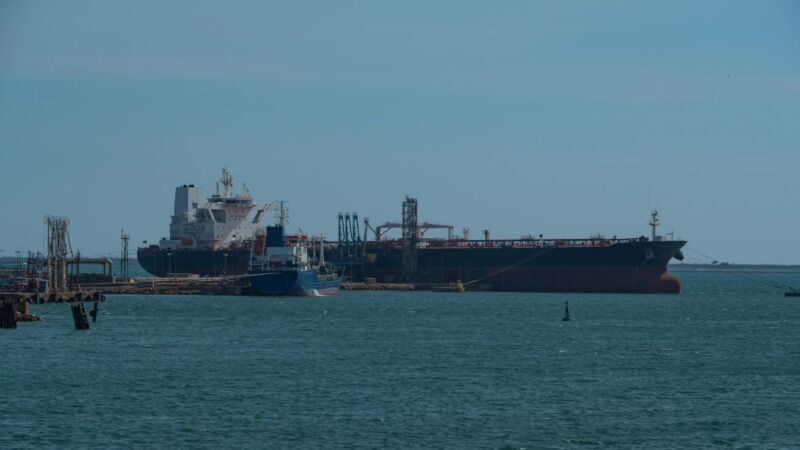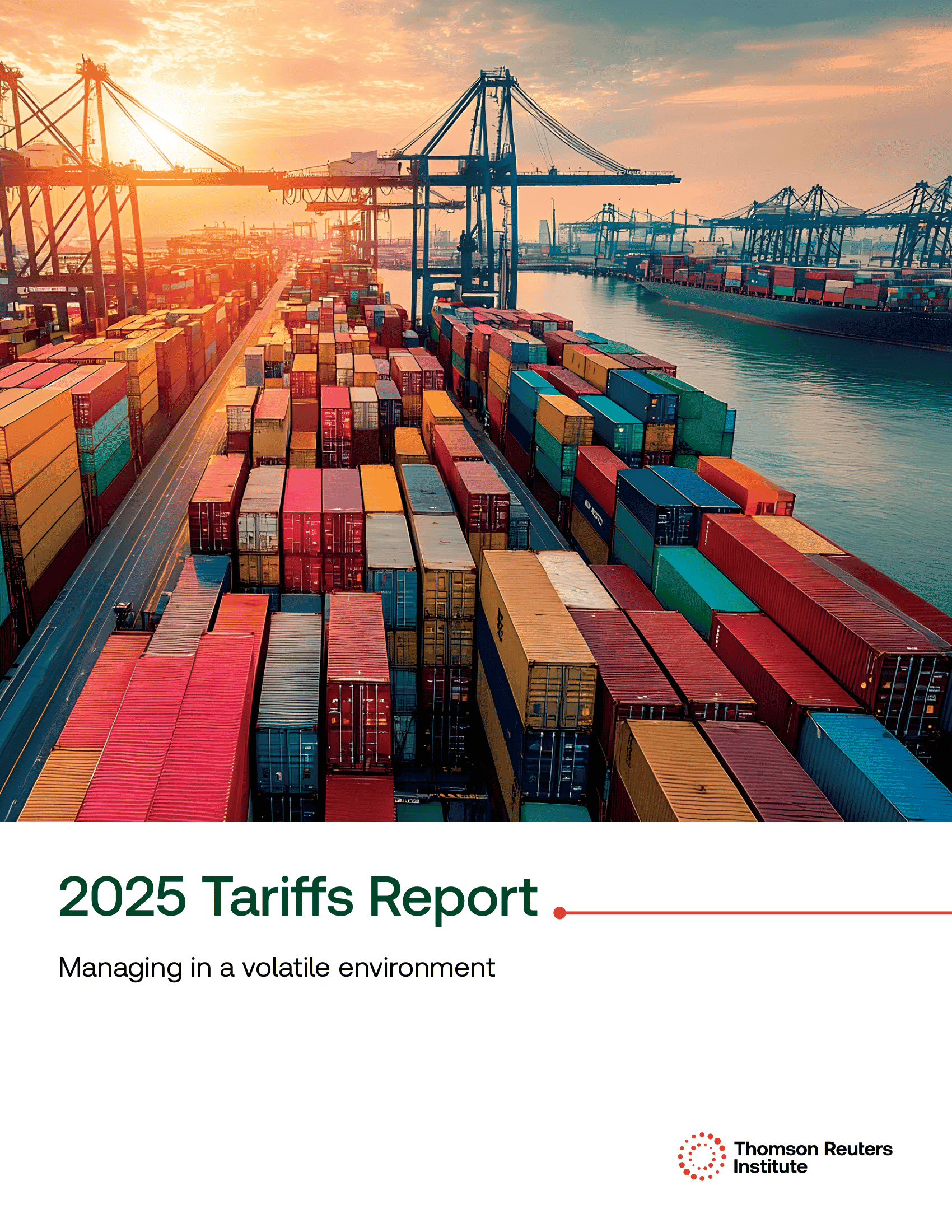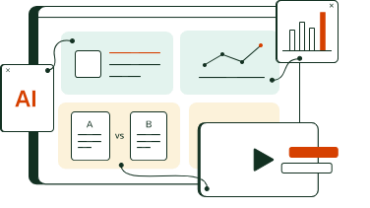How to survive during trade uncertainty
Highlights:
|
The landscape of global trade is currently marked by significant volatility, driven by fluctuating tariffs, ongoing trade tensions, and realigning international alliances. To shed light on these challenges and offer actionable strategies, Freight Waves Media recently partnered with Thomson Reuters to host a webinar. The session brought together experts to talk about how businesses can deal with this difficult situation. It focused on ways to reduce the risk and the important role of technology
The shifting sands of global trade
Karen Lobdell, senior manager for product management at Thomson Reuters, kicked off the discussion by presenting results from a corporate tariff survey. This survey highlighted pre-existing trends and strategies businesses were employing, painting a picture of how companies were already grappling with trade uncertainties. Lobdell noted, “The percentage of imports that were believed to be at risk because of the U.S. tariffs or the countermeasures fell in that high percentage over 50%.” This statistic underscores the widespread impact of these trade measures.
The discussion then moved to the current tariff landscape, emphasizing that these are not just American issues but affect corporations globally. The constant barrage of tariff announcements, sometimes with little warning, creates a demanding environment. As Lobdell highlighted, “People are having to make decisions and analysis with maybe a 24-hour notice in some cases.” This uncertainty necessitates a proactive and well-informed approach.
Adapting through strategy and foresight
A key theme from the webinar was that companies need to change using a mix of planning and technology. Lobdell emphasized that the rapid pace of change means “things are moving at a rapid pace, so the automation tool will certainly help us keep up”
Companies are actively exploring various strategies to lessen the impact of tariffs, including:
- Shifting their sourcing patterns to different countries or regions.
- Renegotiating contracts with suppliers to share or offset cost increases.
- Increasing inventory levels, or “front-loading,” to buffer against anticipated future tariff hikes.
Drew McElwee, senior manager for professional services at Thomson Reuters, pointed to the growing popularity of duty deferral options. “Duty deferral has been quite an influx for us to work through because I think, you know, when a lot of firms kind of look at their options, they say, hey, what can I control?” he explained. Options like foreign trade zones (FTZs), which are secured areas under U.S. Customs and Border Protection (CBP) supervision that are generally considered outside CBP territory upon activation, allow companies to defer, reduce, or even eliminate customs duties, providing a financial buffer and greater control over supply chain costs.
Effective internal communication is also paramount. Karen Lobdell stressed, “Regular communication right now is important, whether that’s a weekly meeting, a daily meeting… but there’s got to be regular communication.” This ensures that company leadership remains informed and can make timely, data-driven decisions.
McElwee also emphasized the importance of structured and transparent internal communication. He described a successful client’s approach: “There’s a strict format to that. And there’s also an ethos to that of transparency and knowing when to ask for help.” Regular meetings involving all relevant departments—logistics, sales, procurement, finance, and legal—ensure alignment and preparedness. This touches upon a crucial point: “It’s a people problem, this can be a data problem or all of the above. Providing your people and asking for help is crucial,” McElwee added.
Technology and data: Navigational tools in tariff chaos
The experts unanimously agreed that technology and data analytics are no longer optional but essential for trade specialists. Lobdell stated, “Data is critical at this point. In order to do your scenario planning, in order to do your what ifs and provide feedback and provide guidance to senior leadership, you’ve got to have the data.” Automation tools for tasks like trade lane analysis and supply chain risk assessment help companies understand potential tariff impacts and plan effectively.
McElwee supported this, observing that proactive companies invest in automated systems for better data visibility and control. “Those that really are taking advantage are getting down to the fundamentals, the first principles of getting any and all data they have into our system to enable these options,” he said. Such an approach allows businesses to swiftly adjust their strategies and maintain compliance amidst evolving regulations. The integration of historical data further strengthens this analytical capability, enabling more robust strategic decision-making.
Grace Sharkey, staff writer at Freight Waves, also highlighted the utility of external information sources. “Whether it’s news alerts that they’re getting from their consulting relationships, their legal relationships, their service providers, their customs brokers, trade associations are a fabulous source of information these days,” she advised. These external inputs offer a broader market view and insights into competitor strategies.
Staying vigilant and informed in an unpredictable world
Given the often unconventional ways tariff announcements are made, trade specialists must maintain vigilance across multiple channels.
Lobdell talked about the special way some political leaders communicate. For example, she said that social media platforms can become the main sources for breaking news on tariffs. She told professionals to watch these, along with official channels like the White House website and Federal Register notices, to stay up-to-date.
Lobell also championed trade associations as valuable resources. “Trade associations give you an opportunity to talk to colleagues… and get a feel for how people are trying to tackle these challenges and maybe come up with some solutions you haven’t thought about,” she suggested. These networks provide practical insights and benchmarks.
Best practices for navigating the tariff landscape: Advice from global trade experts
The webinar distilled several best practices for businesses aiming to mitigate tariff impacts:
- Diversify sourcing: Avoid over-reliance on single regions or suppliers.
- Explore free trade agreements (FTAs): Investigate if FTAs can offer preferential duty rates for your products.
- Use duty deferral: Investigate options like customs bonded warehouses and foreign trade zones (FTZs).
- Conduct scenario planning: Prepare for worst-case scenarios to remain agile. “The landscape is increasingly political right now and it’s highly complex with how these tariffs are being put together,” Karen Lobiddell warned.
- Maintain flexibility: As Drew McElwee advised from a client’s success, “Setting yourself up with flexibility and not getting too over your skis in one direction has painted a real successful picture.”
Karen Lobiddell also reminded the audience that strategies will vary: “There’s no one size fits all. Everybody’s going tonna have a little bit different approach.” Despite potential 90-day windows for reaction to some tariff changes, “the uncertainty remains,” she cautioned, making adaptability paramount.
Looking ahead
The overarching message from the webinar is clear: successfully navigating the current global trade environment demands a multifaceted approach. Companies must combine strategic foresight, robust technological capabilities, vigilant information gathering, and strong internal communication. Flexibility and the agility to adapt quickly are crucial for not just surviving but thriving amidst ongoing tariff uncertainties.
 |
|










